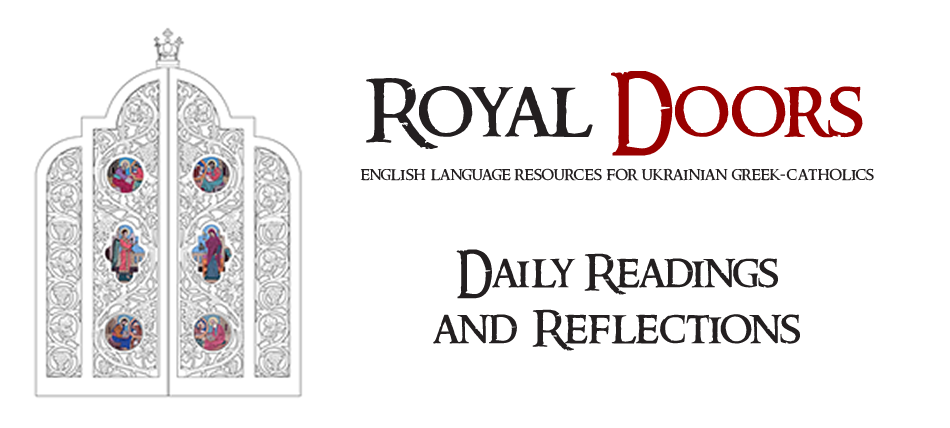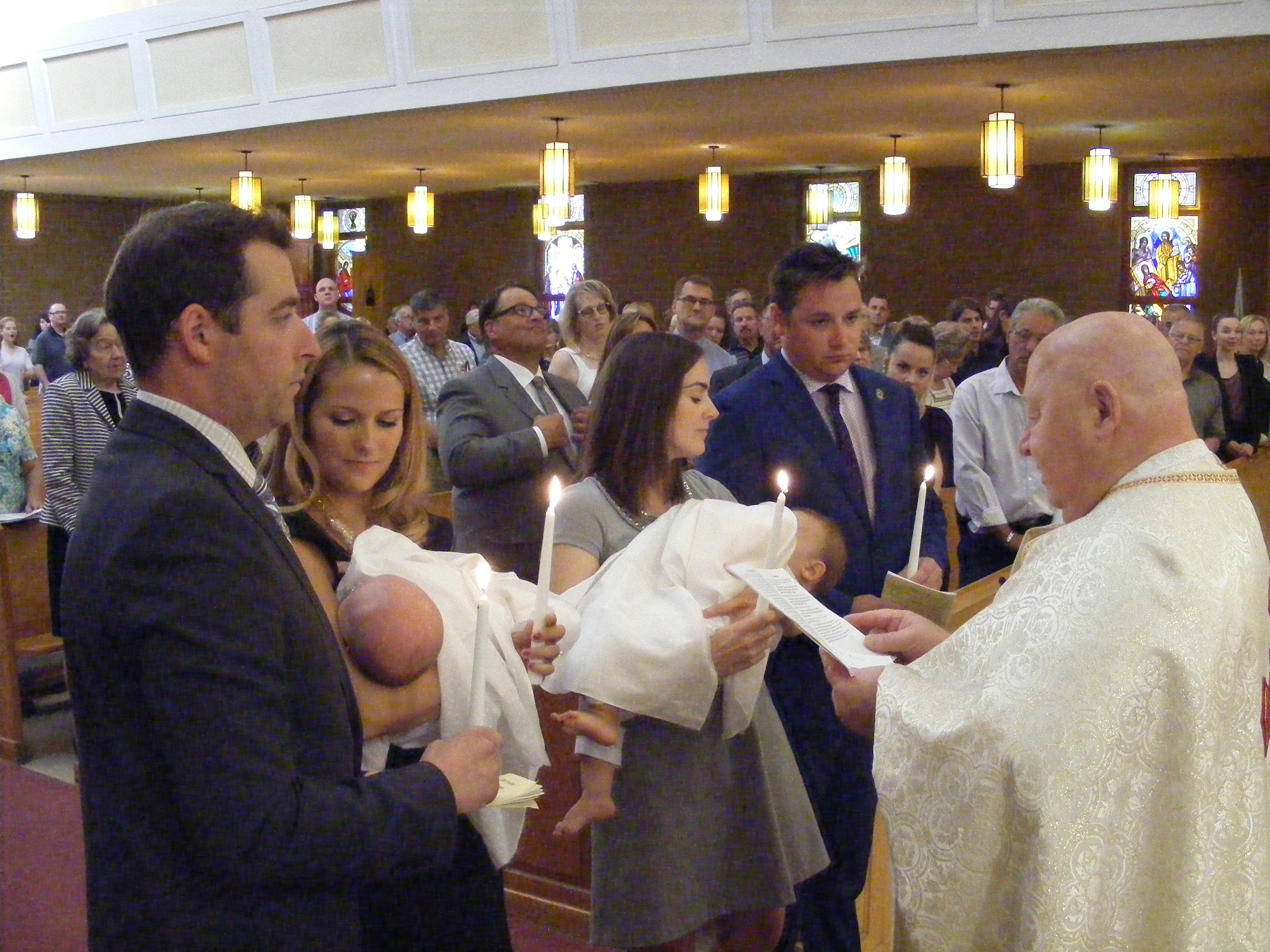by Brent Kostyniuk
In the Byzantine religious tradition, a new Christian becomes a complete member of the Church by receiving the three Mysteries (Sacraments) of Initiation—Baptism, Chrismation, and Holy Eucharist–at the same time. The rationale for this is that from the beginning, the new Christian will be able to fully participate in the life of the Church.
For an infant, he begins a life-long association with Jesus, being able to receive Him regularly from the very start of his life. If we truly believe in the spiritual nourishment the Holy Eucharist provides, then we are also able to believe that nourishment is efficacious no matter what our age or state of mind might be.
As social symbols, the Mysteries of Initiation not only bring about a new spiritual life in Christ, they bring about communion with all the other members of the Church. In particular, the new Christian becomes a part of the local parish family. For that reason, the Mysteries of Initiation ideally should involve the entire parish. Thus, we find that the ancient custom of celebrating these Mysteries in the context of the Divine Liturgy is being revived.
Just such an event took place at St. Basil’s Ukrainian Catholic parish in Edmonton with Fr. Josephat Tyrkalo officiating. Cousins Forest Blair Dolynchuk and Elliot Christopher Semeniuk became members of the Church. Forest’s mother, Anastacia, explains why it was important for her and both families that the baptisms to be witnessed by the entire parish family. “When given the option to baptize our sons during the Divine Liturgy, my sister and I were excited to try something new. We felt that having the baptism during Divine Liturgy really fostered a sense of community within the church for our children. It was nice to have all the parishioners, and not just our families, involved in welcoming our sons into God’s Family. One of my favourite memories when my husband and I were married at St. Basil’s, was when the entire congregation erupted in song, singing for us Mnohaya Lita—Many Happy Years. It was so beautiful! I was equally moved when everyone sang Mnohaya Lita to our boys at the end of the Liturgy; we felt loved and supported by all.”
The sacramental rite closely follows the form of the Divine Liturgy beginning with the Great Litany. However, this is followed by the blessing of water and oil to be used in the baptismal anointing. Another holy oil or myron (Greek) used in Chrismation, a mixture of over 40 sweet-smelling substances and pure olive oil, is prepared once a year by the local bishop. The actual Baptism and Chrismation take place next. As the rite includes Epistle and Gospel readings, it seamlessly replaces the first portion of the Divine Liturgy up to the Great Entrance. This corresponds to the offertory in the Latin Mass.
Aside from the joy of seeing the two infants received into the Church, the ceremony was very much an “audience participation” event. While the vast majority of us have no recollection of our own baptism, it remains a pivotal point in our lives. The vows made on our behalf are as valid as if we had made them ourselves. By actively participating in the initiation of these children, the entire congregation was reminded of those vows and were invited to personally renew them.
These vows take place during the Rite of Completion of the Catechumenate, which, in the ancient Church took place at 3:00 pm on Good Friday, the hour of Christ’s glorification and victory over evil, sin, and death. The first vow, repeated three times, is the Renunciation of Evil. The priest asks, “Do you renounce Satan and all his works, and all his angels, and all forms of service to him and all his pride?” To which the godparents, or catechumen, reply. “I do renounce him.” Symbolically, this is done facing West, a symbol of darkness, in order to break all covenant with evil. This is followed by the Oath of Adherence to Christ, completed while facing East, a symbol of conversion and a desire to return to Paradise. It is a profession of personal attachment to Christ, an enrolment into the ranks of those who serve Christ as their Lord and King. It is similar to the oath made by soldiers. Once again, the oath is repeated three times. The priest asks, “Do you unite yourself to Christ?” The reply is simply, “I do unite myself to Christ.” This is followed by the Nicene Creed.
As the Sacraments of Initiation and Divine Liturgy concluded, Fr. Josephat reminded all those present that they bear responsibility for helping raise the two new parishioners and ensuring we all remain faithful to our baptism vows. On this very special we were all given the opportunity to renew those vows.
This piece first appeared in The Prairie Messenger. Reprinted with permission.


